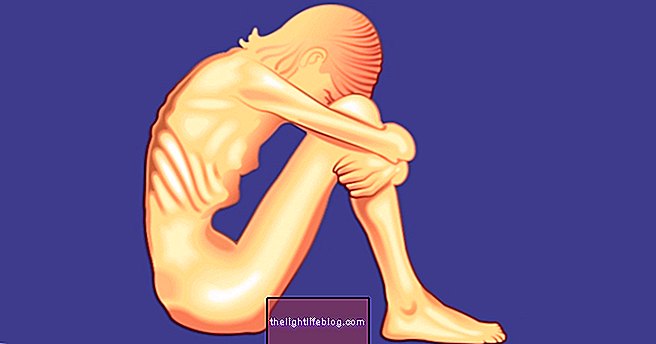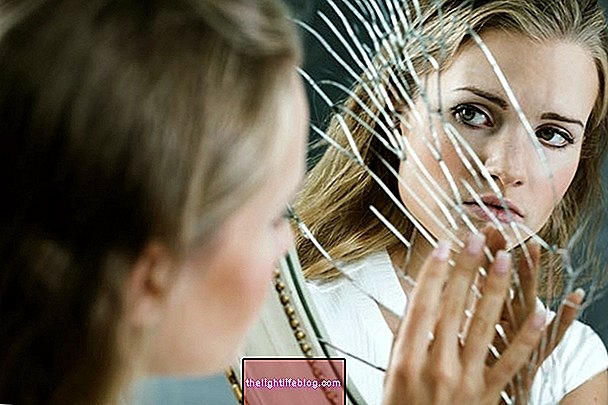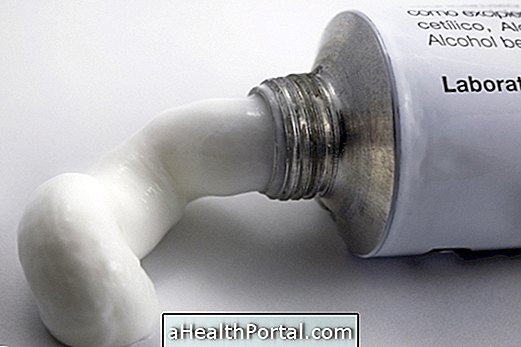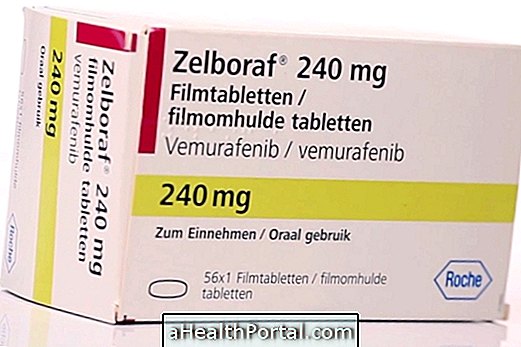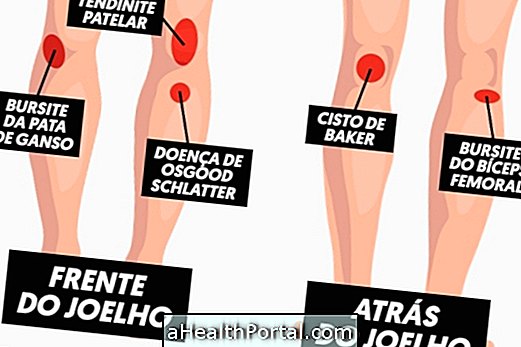Body dysmorphia is a psychological disorder in which there is excessive concern for the body, causing the person to overestimate small imperfections or imagine those imperfections, resulting in a very negative impact on their self-esteem, in addition to affecting their life at work, school and socializing with friends and family.
This disorder affects men and women equally, especially in adolescence, and can be influenced by genetic or environmental factors. Body dysmorphia can be treated with antidepressant medications and psychotherapy sessions, with the help of a psychologist or psychiatrist.

How to identify the symptoms
People suffering from bodily dysmorphia are overly concerned with the appearance of the body, but in most cases they are more concerned with details of the face, such as the size of the nose, ears or the excessive presence of acne, for example.
The characteristic signs and symptoms of this disorder are:
- Have low self-esteem;
- Demonstrate excessive concern for certain parts of the body;
- Always looking in the mirror or avoiding the mirror completely;
- Difficulty concentrating on other day-to-day things;
- Avoid social life;
Men with bodily dysmorphia usually have more severe symptoms, having a greater concern for the genitals, body constitution and hair loss, while women are more concerned with the appearance of the skin, weight, hips and legs.
Online Body Dysmorphia Test
If you think you may be suffering from bodily dysmorphia, complete the following questionnaire to find out your risk:
- 1. Do you worry a lot about your physical appearance, especially in certain parts of the body?
No Yes
- 2. Do you feel that you think a lot about your appearance defects and that you would like to think less about it?
No Yes
- 3. Do you feel that your appearance defects cause a lot of stress or that they affect your daily activities?
No Yes
- 4. Do you spend more than an hour a day thinking about your appearance defects?
No Yes
- 5. Is your biggest concern related to not feeling thin enough?
No Yes

How to confirm the diagnosis
The diagnosis consists of the observation, by a psychologist or psychiatrist, of the person's behaviors, namely the way he talks about his body and the way he tries to hide his imperfections.
Body dysmorphia and eating disorders
Body dysmorphic disorder is related to eating disorders, especially anorexia nervosa, in which the person also has difficulty relating to other people.
The symptoms in both disorders are similar, however long-term follow-up by a multidisciplinary team is important, as there is a high probability of abandoning treatment in the first months.
Muscular dysmorphic disorder
Muscular dysmorphic disorder, also known as vigorexia, is characterized by the person's constant dissatisfaction with his muscular appearance, occurring mainly in men, who normally think that the muscles are not big enough.
Thus, as a consequence of this, the person spends many hours in the gym and adopts an anabolic diet in order to gain muscle mass, in addition to showing symptoms of anxiety and body dysmorphia.
Possible causes
It is not yet known for sure what causes this psychological disorder, but it is thought that it may be related to serotonin deficiency, and be influenced by genetic factors and the child's education, in an environment where there is a excessive concern with the image.
How the treatment is done
Generally, treatment for bodily dysmorphia is done with psychotherapy sessions, namely through cognitive behavioral therapy. Cognitive-behavioral therapy consists of the combination of cognitive therapy and behavioral therapy, which focuses on how the person processes and interprets situations, which can generate suffering. Learn what cognitive behavioral therapy is and see how it works.
In addition, it may be necessary to take antidepressants and anxiolytics, which may be prescribed by the psychiatrist. These remedies can help to reduce the obsessive behaviors associated with body dysmorphia, contributing to improve self-esteem and increase quality of life.
Was this information helpful?
Yes No
Your opinion is important! Write here how we can improve our text:
Any questions? Click here to be answered.
Email in which you want to receive a reply:
Check the confirmation email we sent you.
Your name:
Reason for visit:
--- Choose your reason --- DiseaseLive betterHelp another personGain knowledge
Are you a health professional?
NoMedicalPharmaceuticalsNurseNutritionistBiomedicalPhysiotherapistBeauticianOther
Bibliography
- BJORNSSON, Andi S. et. al .. Body dysmorphic disorder. Dialogues Clin Neurosci .. Vol.12. 2.ed; 221–232, 2010
- BONFIM, Grazielle Willian et. al .. Body Dysmorphic Disorder: literature review. Clinical Contexts. Vol.9. 2.ed; 240-252, 2016
- BROHEDE, Sabina et al. Validation of the Body Dysmorphic Disorder Questionnaire in a community sample of Swedish women. Psychiatry Research. Vol.210, n.2. 647-652, 2013
- BEHAR, Rosa et al. Body dysmorphic disorder: clinical aspects, nosological dimensions and controversies with anorexia nerviosa. Rev Med Chile. 1-8, 2016
Regarding: "Symptoms of bodily dysmorphia":
- BROHEDE, Sabina et al. Validation of the Body Dysmorphic Disorder Questionnaire in a community sample of Swedish women. Psychiatry Research. Vol.210, n.2. 647-652, 2013

